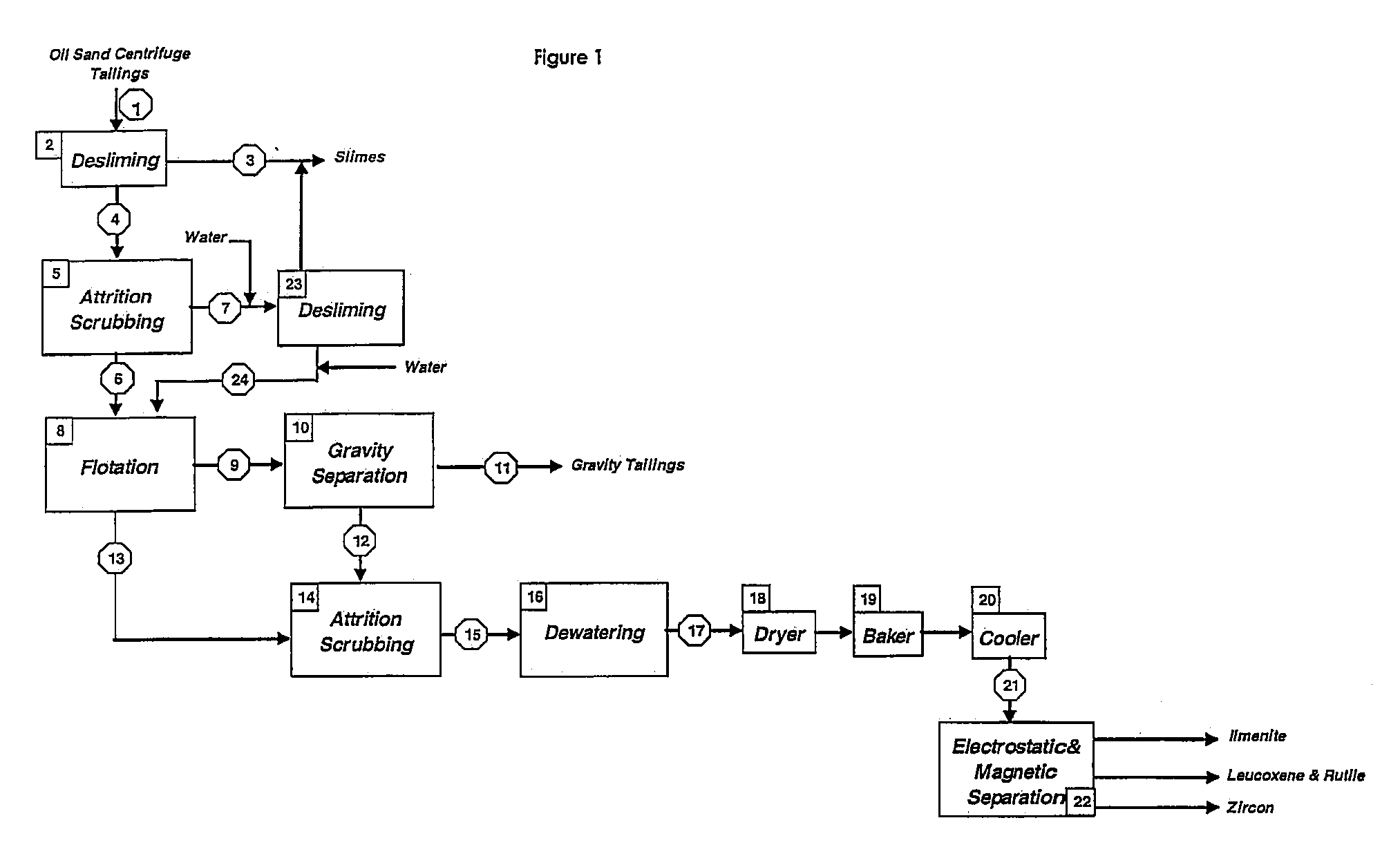Process for recovering heavy minerals from oil sand tailings
a technology of heavy minerals and oil sand tailings, which is applied in the direction of liquid hydrocarbon mixture production, centrifugal force sediment separation, water/sludge/sewage treatment, etc., can solve the problems of heavy minerals, difficult to use normal mineral dressing techniques of the industry, and no longer efficient selective separation of minerals by magnetic and/or electrostatic processes, etc., to improve the overall effectiveness of the separation step, improve recovery, and improve quality and quantity
- Summary
- Abstract
- Description
- Claims
- Application Information
AI Technical Summary
Benefits of technology
Problems solved by technology
Method used
Image
Examples
example i
[0065](a) Oil Sand Tailings
[0066]Fresh oil sand tailings were obtained after centrifugation of diluted bitumen froth in Centrifuge Plants known in the art. Table 1 gives the properties of a typical oil sand tailings preparation useful in the present invention.
TABLE 1Slurry temperature:90-95° C.Slurry pH:8.0-9.0% Solids in Slurry:12%-25%Total Heavy Mineral Content of solids:15%-40%Bitumen Content (Dry Basis):3.5%-5.0%
[0067]Table 2 gives the typical screen analysis of the 12-25% solids, of which 15-40% are heavy minerals, which are found in oil sand tailings.
TABLE 2Screen SizeFractional Mass % +1 mm0.5-1.0 −1 mm + 500 μm1.0-3.0−500 μm + 45 μm65-85 −45 μm25-40
[0068]It can be seen from Table 1 that oil sand tailings still comprise a significant amount of bitumen (3.5-5.0%), which can create significant problems when trying to reclaim the heavy minerals. Further, it can be seen from Table 2 that 25-40% of the total solids in the tailings are fines or slimes having a dimension less than 4...
PUM
| Property | Measurement | Unit |
|---|---|---|
| Temperature | aaaaa | aaaaa |
| Temperature | aaaaa | aaaaa |
| Temperature | aaaaa | aaaaa |
Abstract
Description
Claims
Application Information
 Login to View More
Login to View More - R&D
- Intellectual Property
- Life Sciences
- Materials
- Tech Scout
- Unparalleled Data Quality
- Higher Quality Content
- 60% Fewer Hallucinations
Browse by: Latest US Patents, China's latest patents, Technical Efficacy Thesaurus, Application Domain, Technology Topic, Popular Technical Reports.
© 2025 PatSnap. All rights reserved.Legal|Privacy policy|Modern Slavery Act Transparency Statement|Sitemap|About US| Contact US: help@patsnap.com

